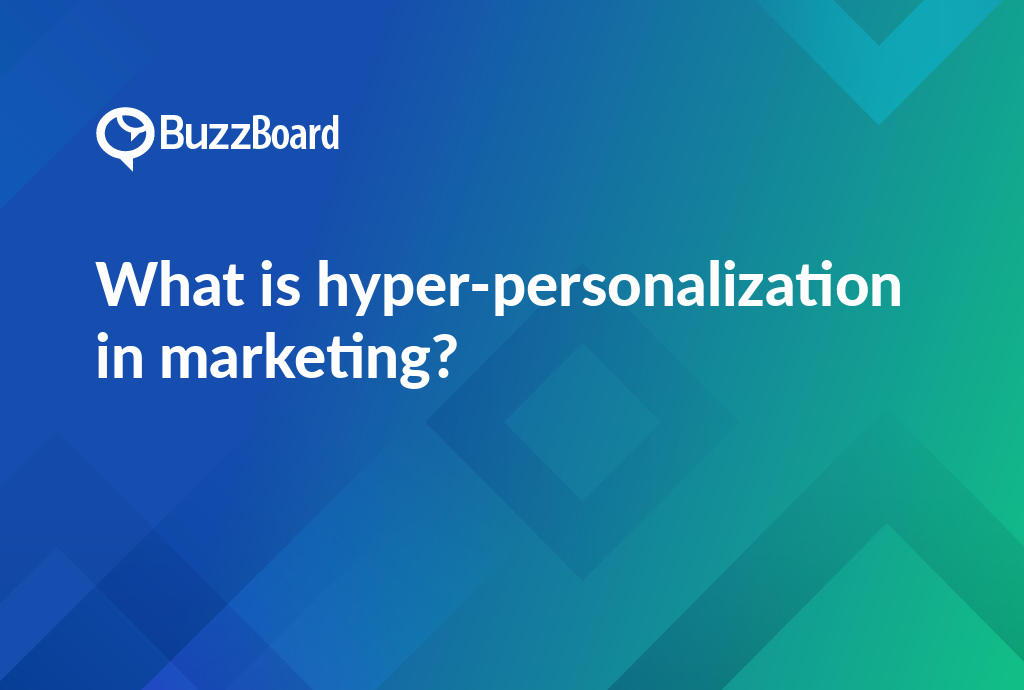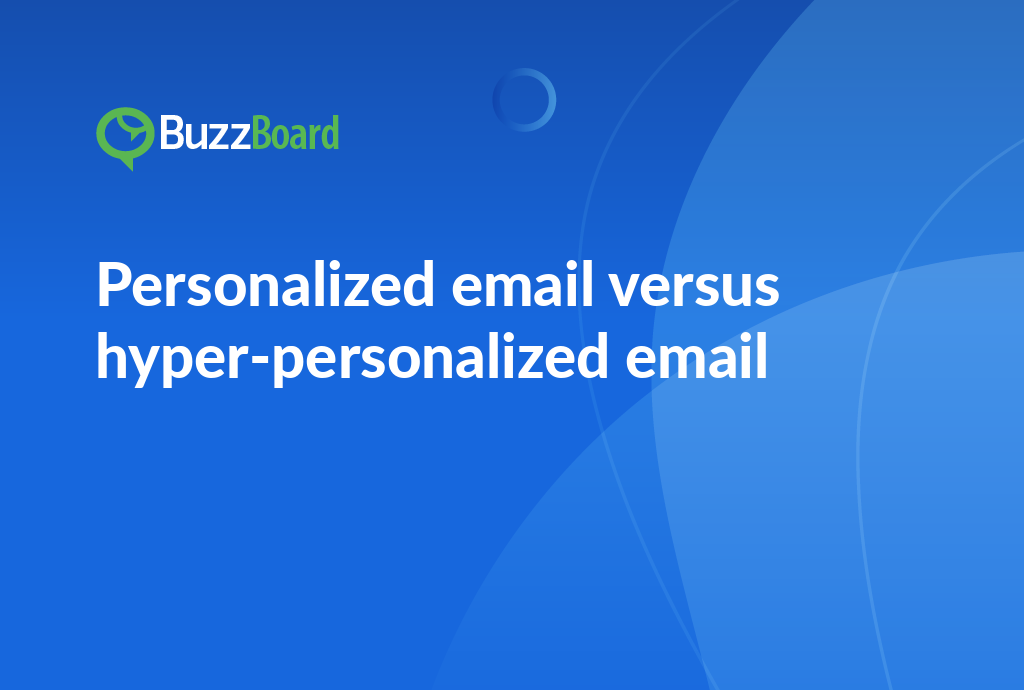Hyper-personalization in marketing is the process of tailoring marketing messages, offers, and experiences to individual customers based on their unique characteristics, behaviors, and preferences. This involves using data and analytics to create highly targeted and relevant interactions, such as personalized product recommendations, customized content, and tailored advertising. By leveraging customer data, hyper-personalization enables businesses to build stronger relationships, increase engagement, and drive conversions. It’s a key strategy for marketers seeking to stand out in a crowded market and deliver exceptional customer experiences.
Explaining What Exactly Hyper-Personalization in Marketing Means for Digital Marketing Agencies
Hyper-personalization in marketing defies the traditional one-size-fits-all approach, revolutionizing the way digital marketing agencies interact with their target audiences. By implementing hyper-personalization, you can delve deeper into customer information, employing sophisticated algorithms and real-time data to provide more relevant content, product, and service details.
When you apply hyper-personalization, you can customize marketing messages based on individual customer behaviors and preferences. This method allows for highly effective, personalized, and relevant campaigns. It also involves using advanced technologies such as artificial intelligence (AI) and machine learning to utilize insights from various data sources, so you can deliver highly targeted and personalized content.
Businesses are constantly seeking innovative ways to connect with their customers and drive growth. One effective strategy is to leverage hyper-personalization in marketing, which involves sending targeted and tailored communications to customers based on their individual preferences, behaviors, and interactions with the brand. For instance, imagine a scenario where an agency sends an email to their client’s customers recommending products based on their recent purchases or offering a special discount for a service they frequently use. This type of targeted communication allows businesses to engage with their customers in a meaningful and personalized manner, fostering a deeper sense of connection and loyalty.
Hyper-personalization in marketing for digital agencies is not only about enriching the customer experience, but also about enhancing the business’s Return on Investment (ROI). By delivering the right message at the right time to the right person, you can drastically improve the effectiveness of your campaigns, positively impacting your client’s business growth. This is achieved by leveraging data and analytics to create highly targeted and relevant communications that resonate with each individual customer.
For example, if a customer has recently purchased a specific product or service, a targeted email campaign can be sent offering complementary products or services that align with their interests and needs. This not only increases the chances of making a sale, but also demonstrates to the customer that the brand is paying attention to their preferences and values their business.
Similarly, if a customer frequently uses a particular service, a special discount or promotion can be offered to incentivize them to continue using the service. This not only rewards their loyalty but also encourages them to continue engaging with the brand.
By incorporating hyper-personalization into their marketing strategies, digital agencies can help their clients achieve a range of benefits, including:
- Increased customer engagement and loyalty
- Improved conversion rates and sales
- Enhanced customer satisfaction and retention
- Better data-driven decision making
- Increased brand awareness and reputation
Hyper-personalization in marketing is a powerful tool that can help digital agencies drive business growth and improve their clients’ ROI. By leveraging data and analytics to create targeted and relevant communications, businesses can build stronger relationships with their customers, increase engagement and loyalty, and ultimately drive revenue growth.
In-Depth Look Into the Concept of Using Hyper-Personalization in Marketing, Its Techniques and Its Potential Effects on Consumers
Hyper-personalization is a cutting-edge marketing strategy that leverages real-time data and artificial intelligence to deliver highly personalized and relevance-driven communication at scale. This innovative approach enables businesses to create a deeper connection with their target audience, fostering a more meaningful and engaging customer experience.
The process of hyper-personalization begins with gaining a profound understanding of consumers. This involves collecting and analyzing a vast amount of data, including browsing behavior, transaction history, location, and other relevant information. By acquiring this data, digital marketing agencies catering to small and local businesses can set up triggers to initiate highly personalized marketing campaigns that are tailored to individual consumers’ preferences and behaviors.
These campaigns comprise marketing messages that are designed from an individual consumer’s behavior and preferences, leading to an escalation in engagement and conversion rates. For instance, consider a scenario where a customer receives a push notification about a discounted price for a product they were perusing earlier. The immediate real-time interaction spawns enhanced engagement and conversion, as the customer feels valued and recognized by the brand.
The adoption of hyper-personalization transforms marketing into an interactive conversation rather than a mere transaction. This can produce more personal, relevant, and timely communication, ultimately offering an improved customer experience. By leveraging hyper-personalization, businesses can create a sense of familiarity and connection with their customers, making them feel like they are part of a larger community.
Moreover, hyper-personalization enables businesses to tailor their marketing efforts to specific customer segments, increasing the likelihood of conversion and driving revenue growth. By using hyper-personalization, businesses can also reduce waste and improve the overall efficiency of their marketing campaigns.
To summarize, the implementation of hyper-personalization in marketing can orchestrate relevant and engaging user experiences. By utilizing hyper-personalization, digital marketing agencies can satiate the need for relevance that today’s consumers desire, fostering better customer loyalty and boosting return on investment. In today’s competitive market, hyper-personalization is a crucial strategy for businesses to stay ahead of the curve and achieve long-term success.
Some of the key benefits of hyper-personalization include:
- Increased customer engagement and loyalty
- Improved conversion rates and revenue growth
- Enhanced customer experience and satisfaction
- Reduced marketing waste and improved efficiency
- Better understanding of customer behavior and preferences
- Ability to tailor marketing efforts to specific customer segments
- Improved brand recognition and loyalty
Hyper-personalization is a powerful marketing strategy that can help businesses achieve their goals and stay competitive in today’s market. By leveraging real-time data and artificial intelligence, businesses can create highly personalized and relevance-driven communication that resonates with their target audience.
Discussing Various Strategies for Successfully Applying Hyper-Personalization in a Marketing Campaign
The digital era has witnessed a remarkable surge in the adoption of hyper-personalization in marketing, and for sales representatives targeting small and local businesses, staying ahead in applying successful hyper-personalization strategies is crucial for driving growth and staying competitive. Hyper-personalization enables the creation of custom marketing messages that resonate deeply with customers, leading to enhanced customer engagement, increased conversions, and ultimately, significant boosts in sales.
So, how can sales representatives apply hyper-personalization in their marketing efforts? The journey begins with gathering comprehensive customer data, which extends beyond online interactions to include in-store activities such as point-of-purchase actions, social media engagement, and customer feedback. This rich data offers valuable insights into customer behavior, preferences, and pain points, enabling sales representatives to develop targeted marketing strategies that speak directly to their customers’ needs.
Once the data is collected, implementing machine learning techniques or AI can help analyze and identify underlying patterns, predict customer behavior, and tailor messages accordingly. This allows sales representatives to create experiences that feel unique to each consumer, fostering a deeper connection with their target audience. By leveraging data and analytics, sales representatives can:
- Identify high-value customers and tailor their marketing efforts to retain them
- Develop targeted campaigns that resonate with specific customer segments
- Optimize marketing channels and messaging to maximize ROI
- Anticipate customer needs and preferences, enabling proactive marketing strategies
However, it’s essential to handle personal data with care and transparency. Maintaining open communication with customers about how their data is being used and collected can help build trust and loyalty. Transparency is key to ensuring that customers feel comfortable sharing their data, which is critical for hyper-personalization.
Hyper-personalization is not about flooding customers with messages or being overly aggressive in their marketing efforts. Rather, it’s about delivering the right message, at the right time, via the correct channels. This requires a thoughtful and strategic approach to marketing, one that prioritizes customer needs and preferences above all else.
To achieve hyper-personalization, sales representatives should focus on the following key strategies:
- Develop a deep understanding of their target audience, including their needs, preferences, and pain points
- Collect and analyze comprehensive customer data to inform marketing decisions
- Use machine learning and AI to analyze data and identify patterns and trends
- Create targeted marketing campaigns that speak directly to customer needs and preferences
- Prioritize transparency and customer trust in all marketing efforts
- Continuously monitor and optimize marketing efforts to ensure maximum ROI and customer engagement
By adopting a hyper-personalization strategy, sales representatives can drive meaningful connections with their target audience, increase customer loyalty, and ultimately, drive business growth.
Analyzing the Importance of Customizing Marketing Messages and How It Significantly Contributes to Hyper-Personalization
The significance of customizing marketing messages cannot be overstated, particularly in the realm of hyper-personalized marketing. Hyper-personalization involves collecting and analyzing customer data with unwavering rigor to craft marketing messages that are tailored to individual customers’ unique preferences, behaviors, and past interactions. This meticulous approach can have a profound impact on customer engagement and loyalty, setting brands apart from their competitors in today’s crowded marketing landscape.
The importance of customized marketing messages becomes crystal clear when we examine the intricate relationship between the brand and the consumer. Brands that excel in hyper-personalizing their messages can establish a connection that feels uniquely tailored to each customer, fostering a sense of belonging and loyalty. In an era where customer experience is paramount, this personalized approach is essential for building trust and driving long-term relationships.
Data provides compelling evidence to support this argument. According to a recent study, a staggering 70% of consumers report feeling frustrated with irrelevant emails, highlighting the damaging effects of a broad, one-size-fits-all approach to email marketing. In contrast, hyper-personalized marketing messages that are tailored to individual customers’ preferences and behaviors can lead to increased engagement, conversions, and customer loyalty.
To deploy effective hyper-personalization tactics, sales representatives must leverage the power of advanced analytics and automation tools. These platforms enable the creation of detailed customer profiles, allowing marketers to understand customers’ behaviors, preferences, and interactions in real-time. By analyzing this data, sales representatives can craft marketing messages that resonate on a personal level, speaking directly to each customer’s unique needs and interests.
For sales representatives looking to augment their marketing efforts with hyper-personalization, this guide provides a comprehensive roadmap for success. By following the principles outlined in this guide, marketers can learn how to harness the power of hyper-personalization to drive meaningful connections with their customers, increase engagement, and ultimately, drive business growth.
Some key takeaways from this guide include:
- The importance of collecting and analyzing customer data to inform marketing messages
- The role of advanced analytics and automation tools in creating tailored marketing messages
- The benefits of hyper-personalization, including increased customer engagement and loyalty
- Strategies for implementing hyper-personalization in email marketing, social media, and other channels
- Best practices for measuring the effectiveness of hyper-personalization efforts
By following this guide, sales representatives can unlock the full potential of hyper-personalization, driving meaningful connections with their customers and setting their brand apart in a crowded market.
Addressing the Potential Challenges and Pitfalls Associated With Hyper-Personalization in Marketing and How to Effectively Overcome Them
Hyper-personalization in marketing has become a game-changer for businesses, significantly impacting profit margins. As sales representatives targeting small or local businesses, it is crucial to understand the effective implementation of this concept, as well as the potential pitfalls that can arise.
Hyper-personalization involves tailoring marketing messages to individual users’ needs, habits, and preferences, promising enhanced customer engagement and conversion rates. By leveraging data and analytics, businesses can create highly targeted and relevant campaigns that resonate with their audience. However, this strategy can backfire if not executed properly, raising concerns about privacy and data protection.
To avoid these concerns, it is essential to maintain a transparent approach, clearly conveying data collection, storage, and usage policies to customers in an understandable format. This transparency is critical in building trust with customers, who are increasingly wary of sharing their personal information. By being open and honest about how data is used, businesses can demonstrate a commitment to customer privacy and security.
Another pitfall to avoid is the creation of inauthentic consumer experiences. Hyper-personalization should not result in robotic or generic messaging that contradicts the very concept of customization. To surmount this, businesses must judiciously use AI technologies and invest in resources proficient in human conversation. This ensures that marketing messages are not only personalized but also empathetic and engaging.
Despite the challenges associated with applying hyper-personalization in marketing, the benefits are overwhelming. With continual technological advancements supporting this strategy, businesses can leverage machine learning, natural language processing, and other AI-powered tools to create highly effective campaigns.
To guarantee a successful campaign, businesses must skillfully deploy these technologies, combining them with human insight and creativity. This requires a deep understanding of customer behavior, preferences, and motivations, as well as the ability to adapt and evolve marketing strategies in response to changing customer needs.
In conclusion, hyper-personalization in marketing holds significant potential for businesses, but its effective implementation requires careful consideration of the potential pitfalls. By prioritizing transparency, authenticity, and human-centered approaches, businesses can harness the power of hyper-personalization to drive customer engagement, conversion rates, and ultimately, revenue growth.
Conclusion
The importance of effective communication in the workplace cannot be overstated. By understanding the different communication styles and adapting to them, individuals can improve their relationships with colleagues, build trust, and increase productivity. Additionally, by being aware of potential barriers to communication, such as language and cultural differences, individuals can take steps to overcome them and ensure that their message is received clearly.
By implementing effective communication strategies, organizations can reap numerous benefits, including improved employee engagement, increased job satisfaction, and enhanced collaboration. Furthermore, effective communication can help to reduce conflicts and misunderstandings, leading to a more positive and productive work environment.
Ultimately, effective communication is a key component of a successful and thriving organization. By prioritizing communication and making it a core part of their culture, organizations can build strong relationships with their employees, customers, and partners, and achieve their goals and objectives.









